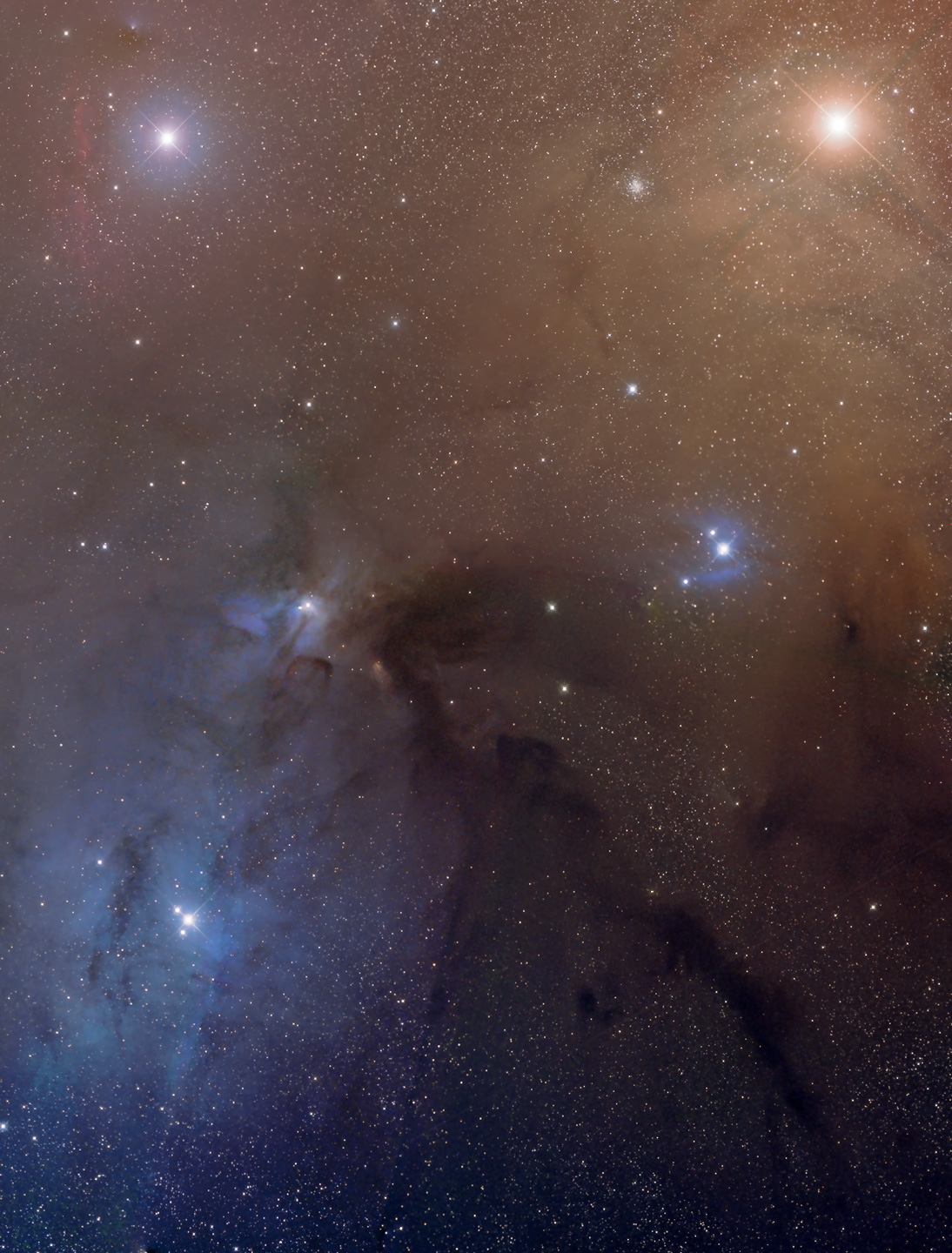
Optics/mount: 180 Epsilon f2,8 Takahashi Mount Alt-5ADN
CCD: QHY 12
exposure: mosaic 9x10x600 sec
The Rho Ophiuchi cloud complex is a dark nebula of gas and dust that is located 1° south of the star ρ Ophiuchi of the constellation Ophiuchus. At an estimated distance of 131 ± 3 parsecs, this cloud is one of the closest star-forming regions to the Solar System.
This cloud covers an angular area of 4.5° × 6.5° on the celestial sphere. It consists of two major regions of dense gas and dust. The first contains a star-forming cloud (L1688) and two filaments (L1709 and L1755), while the second has a star-forming region (L1689) and a filament (L1712–L1729). These filaments extend up to 10–17.5 parsecs in length and can be as narrow as 0.24 parsecs in width. Some of the structures within the complex appear to be the result of a shock front passing through the clouds from the direction of the neighboring Sco OB2 association.
Temperatures of the clouds range from 13–22 K, and there is a total of about 3,000 times the mass of the Sun in material. Over half of the mass of the complex is concentrated around the L1688 cloud, and this is the most active star-forming region. There are embedded infrared sources within the complex.[6] A total of 425 infrared sources have been detected near the L1688 cloud. These are presumed to be young stellar objects, including 16 classified as protostars, 123 T Tauri stars with dense circumstellar disks, and 77 weaker T Tauri stars with thinner disks. The last two categories of stars have estimated ages ranging from 100,000 to a million years.
The first brown dwarf to be identified in a star-forming region was Rho Oph J162349.8-242601, located in the Rho Ophiuchi cloud. One of the older objects at the edge of the primary star-forming region was found to be a circumstellar disk seen nearly edge on. It spans a diameter of 300 AU and contains at least twice the mass of Jupiter. The million-year-old star at the center of the disk has a temperature of 3,000 K and is emitting 0.4 times the luminosity of the Sun.